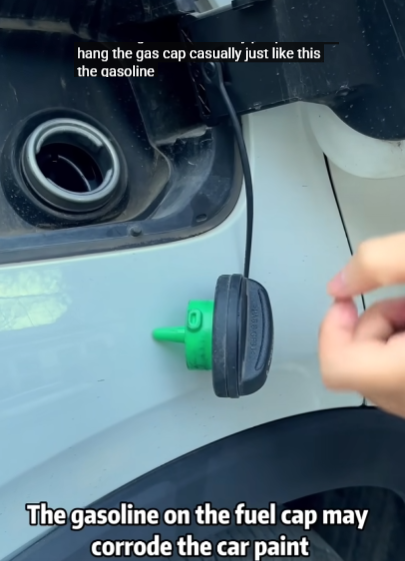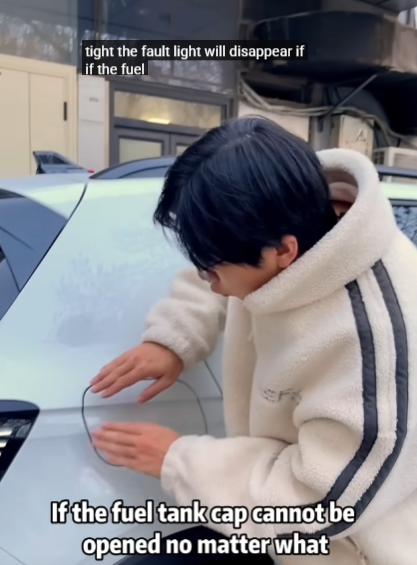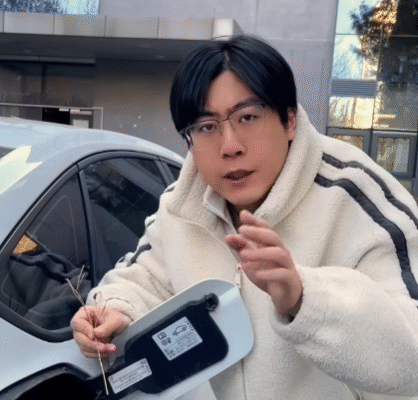
When most drivers think about their car, they often focus on big features—horsepower, sleek design, infotainment systems, or even safety technologies. But sometimes, the smallest components hold the most surprising secrets. One of these overlooked yet essential parts is the fuel tank cap. This little round piece of plastic or metal, usually twisted off without much thought at the gas station, plays a far more critical role in your car’s performance, safety, and even environmental impact than you might imagine.
So, do you know the secret of the fuel tank cap? Let’s take a deeper look into what makes this simple object so vital, and why you should never underestimate it.
1. More Than Just a Lid
At first glance, the fuel tank cap seems to be nothing more than a lid—its obvious job is to close off the fuel tank so dirt, dust, and debris don’t get inside. While this is true, the cap is designed to do much more. A modern fuel cap is actually engineered to maintain the proper pressure inside the fuel system.
Cars today rely heavily on pressurized fuel systems for efficiency. Without the right pressure, your engine may misfire, stall, or lose performance. The cap prevents gasoline fumes from escaping and helps regulate this delicate balance. That’s why when your gas cap is missing or loose, the check engine light often comes on—it’s not just a minor inconvenience, but a warning that your fuel system isn’t sealed correctly.
2. The Safety Secret: Preventing Fires
Gasoline is highly flammable, and the vapors it produces can be even more dangerous than the liquid itself. One of the most important roles of the fuel cap is preventing those vapors from escaping into the open air, where they could ignite.
Think about it: without a fuel cap, gasoline fumes could easily leak out near the rear of your vehicle. A single spark—perhaps from static electricity, a cigarette, or even a hot tailpipe—could cause a fire. In fact, cars without fuel caps used to be much more vulnerable to fuel-related accidents.
Today, fuel caps are designed with safety seals to minimize vapor leaks, protecting both the driver and the public. So next time you twist your cap tightly after filling up, you’re not just protecting your car—you’re actively reducing the risk of a dangerous situation.

3. The Environmental Angle
Another secret of the fuel tank cap lies in its impact on the environment. Gasoline vapors are full of hydrocarbons, which contribute to air pollution and smog. In fact, a missing or faulty cap can allow up to 30 gallons of fuel vapor per year to escape into the atmosphere from a single vehicle.
This might not sound like much, but multiply that by millions of cars, and it becomes a huge environmental issue. That’s why modern caps are designed with emission control valves that keep fuel vapors contained and routed back into the engine to be burned properly.
It’s also why cars undergo emissions testing in many countries—if your gas cap isn’t working, your car could fail inspection. What seems like a tiny piece of plastic is actually a frontline defender against pollution.
4. The Hidden Fuel-Saving Benefit
Did you know that your fuel cap can actually help save you money at the pump? A properly sealed cap reduces fuel evaporation. Gasoline can easily evaporate, especially in hot climates, and if the cap is loose or damaged, you may be losing fuel without realizing it.
Over time, this can add up to significant losses. Studies suggest that a faulty gas cap can reduce your fuel economy by up to 2%, costing you extra money every time you refuel. Replacing a worn-out cap usually costs less than $20, which is a small price to pay for preventing ongoing fuel waste.
5. The Secret of the Little Arrow
One of the most useful secrets involving the fuel tank isn’t about the cap itself, but about how to find it. Have you ever rented a car or borrowed a friend’s vehicle, only to pull up at the gas station and realize you don’t know which side the tank is on?
Here’s the secret: look at your dashboard fuel gauge. Next to the tiny gas pump icon, there’s usually a small arrow. That arrow points to the side of your car where the fuel tank cap is located. This little trick saves drivers from embarrassment and awkward maneuvers at the pump.
It’s a detail most drivers never notice until someone points it out—but once you know, you’ll always check.

6. Different Types of Fuel Caps
Not all fuel tank caps are created equal. Depending on your vehicle, you might encounter:
- Threaded caps: The traditional twist-on, twist-off style.
- Locking caps: Designed with a keyhole, these provide extra security against fuel theft or tampering.
- Capless systems: Found in many modern cars, these don’t have a removable cap at all. Instead, a spring-loaded flap seals the tank. They’re convenient but require careful use to avoid dirt getting inside.
Each design has its own advantages, but the mission remains the same—sealing your fuel system effectively.
7. The Warning Signs of a Bad Fuel Cap
Because the cap plays such a vital role, it’s important to recognize when it needs replacing. Some warning signs include:
- The check engine light comes on after refueling.
- You smell strong gasoline fumes around your car.
- The cap doesn’t tighten or clicks endlessly.
- Reduced fuel economy or rough engine performance.
If you notice these symptoms, don’t ignore them. A new cap is cheap and can save you from bigger repair costs down the road.
8. A Piece of History
Interestingly, fuel caps have evolved with car design. In older cars, caps were often located right on top of the rear fender, sometimes even decorated with chrome for style. In the 1950s and 60s, some manufacturers hid them behind taillights or license plates as a design feature.
Today, practicality and safety are the priority, so the cap is usually tucked behind a fuel door with a release button inside the car. While less glamorous, this change has made modern vehicles much safer and more efficient.

9. Everyday Tips for Fuel Cap Care
To keep your fuel cap in good condition, here are a few simple tips:
- Always twist until you hear the “click” (for caps designed this way).
- Don’t over-tighten, as it can damage the seal.
- Keep the threads clean to prevent dirt from interfering with the seal.
- Replace the cap if it cracks, warps, or loses its rubber gasket.
These small habits ensure your car remains safe, efficient, and environmentally friendly.
Conclusion: The Secret Revealed
So, what’s the secret of the fuel tank cap? It’s that this small, often ignored piece of equipment does far more than cover the hole where you pump gas. It ensures safety by preventing fuel vapor leaks, it protects the environment by keeping emissions in check, it saves you money by reducing fuel loss, and it even holds a hidden clue on your dashboard to guide you at the pump.
The next time you fill up your tank, take a second to appreciate this unsung hero of automotive engineering. Sometimes, the smallest parts carry the biggest responsibilities.



